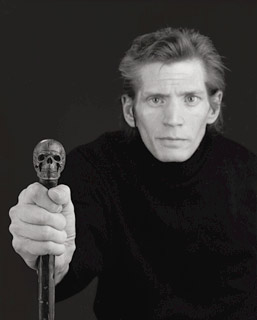|
 |
 |






|

Self-Portrait, 1988. Gelatin-silver print, 26 5/8 x 22 1/2 inches. A.P. 1/1. Solomon R. Guggenheim Museum, Gift, The Robert Mapplethorpe Foundation. 93.4305. © The Estate of Robert Mapplethorpe. |
 |
 |
Robert Mapplethorpe's photographs reflect his intense interest in and knowledge of the history of Western art. The rigorous formal language employed in all of his pictures, which range from portraits to lilies to erotic subjects, reveals a search for idealized form that relates to a variety of influences, including classical sculpture and the work of photographer Edward Weston. From the moment he acquired his first camera in 1970, Mapplethorpe created intimate portraits of himself and his milieu. His images, revealing the sexual subculture in which he partook, are intended to be about intimacy, not violence. The artist himself commented, "For me, S&M means sex and magic, not sadomasochism. It is all about trust." Mapplethorpe's penchant for "sexual wonders" and "erotic monstrosities" reveals the mysterious—and to some, disturbing—qualities of human sexuality. His position was also distinctly ideological in its desire to introduce difference and diversity into the culture at large. In Mapplethorpe's work, contrasts between black and white, particularly through an emphasis on skin tones, are used as much a commentary on race as a means of creating highly stylized and eroticized imagery.
|
|















